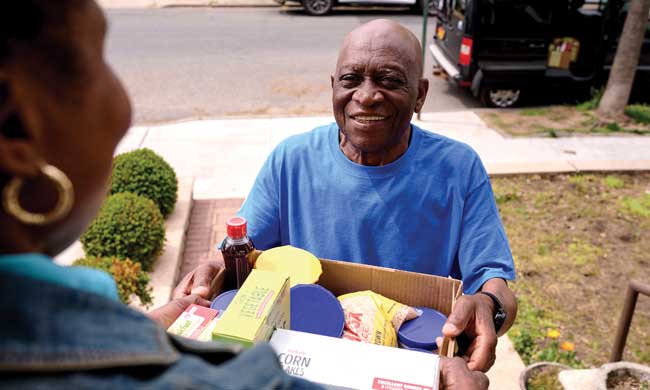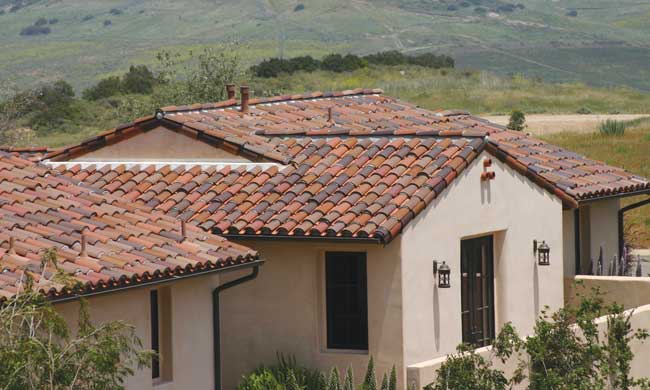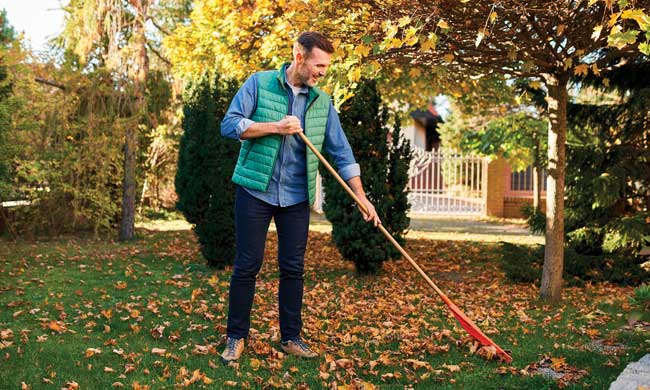Live Better
How families can cut screen time

No matter where you look, screens are everywhere. The proliferation of easily portable tablets and smartphones means many people, adults and children alike, are never too far from the nearest screen. While that accessibility has dramatically changed the way many people live their lives, excessive exposure to screen time can produce a host of unwanted side effects.
Steven Gortmaker, a professor of the practice of health sociology at the Harvard T.H. Chan School of Public Health, has studied the negative effects of excessive screen time on children since the 1980s. According to Gortmaker, such effects include higher rates of obesity among kids who watch too much television and difficulty sleeping among youngsters with access to small screens, such as the screens of smartphones. In addition, a 2012 study published in the journal Psychiatry Research linked screen time with impaired cognitive function in young males.
But adults are not immune to the effects of excessive screen time, either. Spending significant time being sedentary and staring at screens can increase adults’ risk for cardiovascular disease. An Australian study published in the December 2012 issue of the British Journal of Sports Medicine found that, compared with persons who watch no television, those who spend a lifetime average of six hours per day watching television can expect to live 4.8 fewer years.
So what can families do to cut back on their screen time? While it likely won’t be easy to put down smartphones and tablets and turn off laptops and televisions, the following are a handful of ways for families to spend less time staring at screens.
· Remove televisions from bedrooms. Parents may find it impossible to gauge, much less control, how much time their kids spend watching television when youngsters have TV’s in their bedrooms. Though this will likely be met with considerable resistance, remove televisions from bedrooms in your home. Set a positive example for kids by removing your own bedroom television as well. Come kids’ bedtimes, make sure all devices, including smartphones and tablets, are left in common areas of the home rather than bedrooms so kids are not tempted to watch videos instead of falling asleep.
· Institute a “no screens” rule during meals. Many parents grew up in households that did not allow televisions to be on during meals, and while the times might have changed with respect to the technology, similar rules can still prevail today. A “no screens” rule during meals gives parents and their kids time to catch up, bond and foster stronger relationships.
· Do not use the television for background noise. Turn the television off when it’s serving as just background noise. If you need background noise, turn on some music instead.
· Log screen time. Logging screen time for each member of the family can provide an estimate of just how much time the whole family spends staring at screens. Encourage each member of the family to spend as much time being physically active as he or she spends staring at screens. Set goals for each member of the family to reduce their screen time, even rewarding those who reach their goals.
Reducing screen time can improve overall health and help family members reconnect with one another.
Live Better
Finding the perfect volunteer opportunity for you

(Family Features) Tom Thousand spent many years helping low-income residents with home repairs. After retirement, he knew he wanted to continue helping people in his free time.
He answered the call to serve through AmeriCorps Seniors RSVP. Since 2010, he has volunteered to deliver meals to those in need, transported donated food to food pantries and captained boats on a nearby lake for group trips. Thousand was there when his neighbors needed rides to medical appointments and the Red Cross needed help delivering blood in his community.
All across the country, AmeriCorps Seniors connects people aged 55 and older with opportunities to volunteer in their communities. The program matches each volunteer’s interests and skills with local non-profit organizations. More than 140,000 older Americans serve their communities yearly through three core programs – the RSVP Program, the Foster Grandparent Program and the Senior Companion Program.
Many older adults look for variety, flexibility and benefits when searching for a way to volunteer.
“Since it was established in 1971, our RSVP program has been one of the nation’s largest older adult volunteer programs,” said Atalaya Sergi, national director, AmeriCorps Seniors. “The program has a wide variety of service opportunities that allow volunteers to help address our nation’s most pressing challenges. For our volunteers, RSVP takes the guesswork out of choosing how and where to volunteer their time and energy.”
Opportunities vary by city and state, but the RSVP program offers volunteers diverse ways to serve through local organizations. Examples include packaging meals for people with disabilities or other older adults, working in a call center for fraud victims, coordinating poetry workshops at a community center to stimulate the minds of those participating or transporting cancer patients to medical appointments. Service could also involve workforce development and job training or providing disaster preparedness assistance.
There are even select programs specifically designed to support veterans.
Mark Piscatelli volunteers at veterans’ coffeehouses. Coordinated through his local AmeriCorps Seniors RSVP program, the coffeehouses allow veterans to gather and socialize with each other and with volunteers. The social setting creates a safe space, fostering community and stability for everyone involved. Guest speakers frequently visit and provide new and updated information to attendees on local and national veterans’ services.
“AmeriCorps Seniors has created a wonderful opportunity for me to learn about veterans, veterans’ issues, what they’ve experienced, what they currently experience and what some of their concerns are going forward,” Piscatelli said.
David Langlois, a fellow volunteer, concurs.
“I really think that the bottom line is to support our veterans,” he said.
Older adults need volunteer programs that fit their lifestyles and allow them to choose how, where and the frequency of their service. Commitments range from a few hours to 40 hours per week. This flexibility allows Piscatelli and his fellow volunteers to participate without feeling overwhelmed by time obligations.
Volunteering is more than a way to fill time, however. Research from sources such as the National Institute on Aging suggests that older adults who are engaged in social and community activities maintain mental and physical health longer than those who are not.
“After one year of service, 88% of our volunteers reported a decrease in feelings of isolation,” Sergi said. “Plus, 78% of volunteers felt less depressed. That uplifts spirits and significantly impacts and benefits people’s lives.”
Yolanda Dave is an example of the positive impact of volunteering on the community and the volunteers themselves. She started volunteering more than 20 years ago because helping her community with hunger, isolation and literacy issues empowered her to be part of the solution. It’s more than that, though. She also benefits from the experience.
“I love volunteering,” Dave said. “You meet wonderful people of all ages. I get to share my skills, my experience. It keeps me active, mentally and physically, which is very healthy.”
Volunteers like Thousand, Piscatelli, Langlois and Dave support people in need and strengthen their communities and neighborhoods. If you’re 55 or older and looking for the right volunteer opportunity, visit AmeriCorps.gov/YourMoment to explore opportunities near you.
SOURCE:
AmeriCorps Seniors
Live Better
On-trend ways to refresh your house in 2025: 3 trends for improving home design and function

(Family Features) Whether you’re looking to simply refresh your living space or planning a major home renovation, staying current with design trends not only enhances comfort and style but also boosts your house’s value.
As modern home design continues to evolve, trends are increasingly shifting toward long-term movements focused on versatility, sustainability and innovation. By embracing these elements in your 2025 updates, with these ideas from the experts at Westlake Royal Building Products – a leader throughout North America in innovation, design and production of high-quality, low-maintenance exterior and interior building products including siding, trim, mouldings, roofing, stone, windows, outdoor living and more – you can ensure your living space remains stylish and functional for years to come.
Incorporate Versatile Design Elements
Because homeowners’ tastes are continuously evolving, it’s important to take an adaptable design approach when creating unique and harmonious indoor and outdoor spaces. Using products that offer exceptional design versatility, including siding, trim, stone, roofing and other exterior elements, can allow your upgrades to transcend fleeting trends and maintain their relevance and appeal over time.
Similarly, homebuyers are moving away from cookie-cutter designs, seeking bold aesthetics that enhance curb appeal and distinguish their homes from others on the block. This shift toward personalized spaces that reflect individual tastes requires mixing textures, finishes and colors to transform both exteriors and interiors to create visually dynamic and unique looks. Blending materials like brick with vinyl siding, stone with wood or modern siding with rustic stone veneer can add depth and character to facades.
Choose Sustainable and Eco-Friendly Design
Homeowners are increasingly focused on sustainable and eco-friendly home designs to reduce their environmental impact, save on energy costs and create healthier living spaces. Complementing this trend, biophilic design is also gaining momentum as it seeks to strengthen the connection between indoor environments and nature. This approach goes beyond simply adding greenery, focusing on the use of natural light, improved ventilation and materials that mimic organic patterns and textures. Features like large windows, living walls and the use of natural materials, such as wood and stone, have become popular choices, blending sustainability with a deeper connection to the natural world.
Eco-friendly materials that use fewer raw materials, generate smaller carbon footprints and conserve water play a vital role in sustainable design and are in high demand. For example, reclaimed wood, recycled metal and low-VOC (volatile organic compounds) paints are popular choices due to their reduced environmental impact. Innovative products can also help reduce energy consumption like US Tile Clay Roofing, which is naturally reflective, 100% recyclable and, when paired with a cool roof system, can save homeowners up to 22% per year on heating and cooling costs compared to a standard composition asphalt shingle roof.
Seek Functional, Innovative Solutions
Driven by the evolving needs of homeowners, modular and easy-install systems, like panelized stone siding, are gaining popularity due to their ability to simplify installation while mimicking traditional materials such as stone or wood. These functional systems save time and can empower homeowners to tackle projects themselves.
In addition, the rising frequency of severe weather events is increasing demand for smart, weather-resistant materials that enhance homes’ aesthetic appeal and offer superior protection against extreme conditions. An option like Versetta Stone, which delivers the authentic look and feel of stone in an easy-to-install panelized format, offers wind resistance up to 110 miles per hour and carries a Class A fire rating. The stone siding features a tongue-and-groove system for perfect spacing, has a built-in rainscreen and can be installed almost anywhere using screws or nails without additional footings for support.
Find more home design trends and inspiration at WestlakeRoyalBuildingProducts.com.
Live Better
Autumn lawn maintenance tips for a healthy yard

(Family Features) As temperatures drop and the first frost approaches, it’s time to take steps to winterize your lawn to ensure a lush, green comeback next spring.
A thorough inspection can help you identify the needs of your lawn, allowing you to tailor your fall maintenance efforts more effectively. Look for signs of damage such as bare patches, thinning areas or discoloration, and take note of any weeds or pests that may have taken hold. This evaluation sets a foundation for the steps you should take to prepare your lawn for the next growing season.
From mowing one last time (on a lower setting to help minimize the risk of snow mold and other winter-related issues) to removing leaves and applying winterizing fertilizer, these tips can help ensure your lawn is ready for the colder months.
Rake and Remove Leaves
A quintessential autumn chore, raking leaves and removing other debris from your yard can make a significant difference for your lawn’s health. Leaves left on the ground can smother your grass, blocking sunlight and trapping moisture, which can lead to fungal growth and other issues.
Use a lightweight rake to avoid damaging the grass or use a mulching mower to shred leaves into smaller pieces that can decompose and provide nutrients for the soil. If you have a compost bin, fallen leaves can be a valuable addition, enriching your compost with organic matter.
Fertilize for Fall
Fertilizing is a critical component to aiding your lawn in replenishing nutrients that were depleted during the warmer months. A well-fed lawn recovers more quickly from stress and can establish strong roots before winter sets in.
Choose a high-quality, slow-release fertilizer specifically formulated for fall application and apply evenly across your lawn. Applying fertilizer in mid- to late-autumn ensures the nutrients are absorbed by the grass, fostering healthy growth and preparing it to withstand the colder months.
Overseed the Lawn
Overseeding involves spreading grass seed over your existing lawn to fill in bare spots and improve density. Particularly beneficial in the fall, as the cooler temperatures and increased moisture create ideal conditions for seed germination, the practice not only enhances the appearance of your lawn but also improves its resilience against diseases and environmental stress.
Choose a grass seed mix suitable for your climate and lawn type. After spreading the seed, lightly rake the lawn to ensure the seed makes contact with the soil. Water the area thoroughly and maintain consistent moisture until new grass is well established.
Find more tips to maintain your lawn and garden at eLivingtoday.com.
Photo courtesy of Shutterstock
SOURCE:
eLivingtoday.com
-

 NEWS2 years ago
NEWS2 years ago2 hurt, 1 jailed after shooting incident north of Nocona
-

 NEWS12 months ago
NEWS12 months agoSuspect indicted, jailed in Tia Hutson murder
-

 NEWS2 years ago
NEWS2 years agoSO investigating possible murder/suicide
-

 NEWS2 years ago
NEWS2 years agoWreck takes the life of BHS teen, 16
-

 NEWS1 year ago
NEWS1 year agoMurder unsolved – 1 year later Tia Hutson’s family angry, frustrated with no arrest
-

 NEWS1 year ago
NEWS1 year agoSheriff’s office called out to infant’s death
-

 NEWS2 years ago
NEWS2 years agoBowie Police face three-hour standoff after possible domestic fight
-

 NEWS2 years ago
NEWS2 years agoDriver stopped by a man running into the street, robbed at knifepoint








